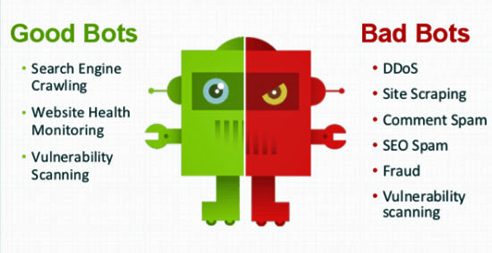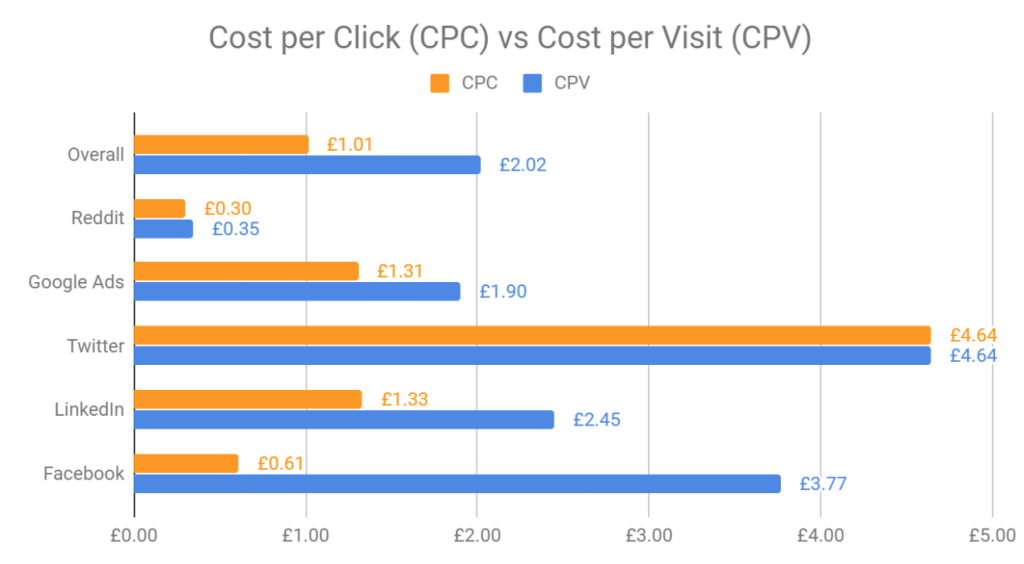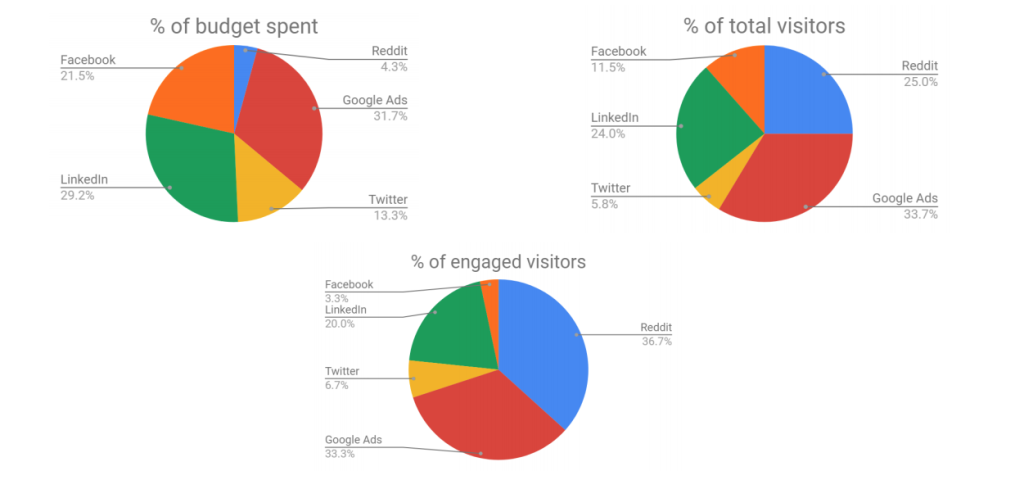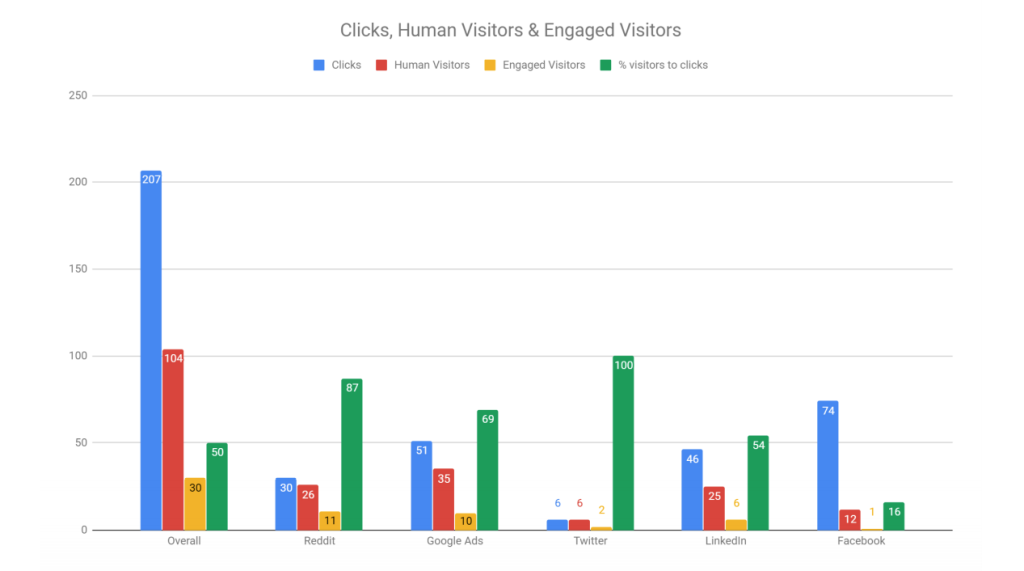Almost half of your clicks are bots
We once ran an experiment to see whether the numbers of clicks reported by the different social media networks matched with that of our own Veracity platform’s records.
To no-one’s surprise, they didn’t.
Our PPC campaign showed a marked difference in the number of clicks which were being reported by the social media platforms, and those we were recording in Veracity – once we’d removed the bots and fake clicks!
Of course, when 47% of all internet traffic comes from bots, it can be difficult to get down to the real analytics and make sure you’re not getting data which is muddied by non-human interactions.
Not all bots are bad, but having non-human interactions in your data will ultimately skew the results, and this can result in not only lost ad spend, but also false impressions of how successful campaigns can be or whether your lead generation is working.
What are good bots?
There are a number of automated programmes which trawl the world wide web for good reasons, Google’s own spider bot Googlebot included.
The most common of these include:
- Copyright Bots – does what it says it does, looks for articles or content which may have been plagiarised or illegally uploaded.
- Trade/Shopping Bots – these are the ones which search for the best available deals across multiple websites for whatever item you’re looking to buy.
- Data Bots – like the BBC Weather App, which will search for the most up to date information available on a particular subject.
- RSS Bots – these pull together news articles on a subject and present it in an easily digestible format.
What are malicious bots?
Malicious bots act like legitimate users, which makes them much harder to identify – and block. They exploit correct business practise by mimicking human behaviour and they can expose any technical vulnerabilities on your website.
They can also throttle your bandwidth, slow down your servers, and steal sensitive data, leading to financial losses and damage to your brand and business reputation.
As the father of advertising, the great John Wanamaker once said:
“Half the money I spend on advertising is wasted; the trouble is I don’t know which half.”
Our Experiment
Back in 2019, as part of the Leeds Digital Festival, we ran an experiment across various marketing campaigns including, Facebook, Twitter (now known as X), Google Ads, LinkedIn and Reddit.
The results were interesting…
As you can see from our chart above, the various platforms to which we assigned PPC spend, reported their Cost Per Click (show in orange), and our Veracity platform reported the real Cost Per Visit (shown in blue).
We calculated this by simply removing the bot clicks and fake website visits that Veracity identified from the overall spend, meaning that we actually ended up spending more per click, if our goal was to drive real human visitors to the website… which, of course it was.
These pie charts below show which platform was the most effective in driving real human visitors to our website.
In the first chart you can see where most of our campaign budget was spent. Looking at the second chart (below), you can see where our visitors for the campaign came from and you can see that Google Ads delivered most of our website traffic (33.7%), followed surprisingly by Reddit (25%).
Our platform, Veracity, also analyses your website visitor actions and maps their user journeys across your website.
This allows us to determine if your website visitors (once identified as real humans) are actually engaged in your content and interacting with your webpages. We call these engaged visitors.
So, looking at the 3rd pie chart, we can see that the clear winners at driving engaged human visitors are Google Ads and Reddit.
The following chart is a breakdown of the clicks, human visitors, engaged visitors, and the percentage of visitors to clicks.
Looking at the clicks (blue) and comparing them to the human visits (red) you can clearly see the difference between what these ad platforms are telling you when it comes to delivering genuine human website traffic.
We understand that every campaign is different, and there is no one advertising strategy or standardised audience, but the figures of our experiment campaign speak for itself.
We worked out that the average cost per click during our campaign was £1.01, but the average cost per real human visit was £2.02, which meant half of our clicks during our campaign were from bots!
How Veracity helps
Ad Fraud Protection by Veracity uses patented, AI-powered bot detection to protect your campaigns, budget and traffic data from fake activity. It takes just minutes to get started, for free, and start defending your Google, Facebook, Instagram and Bing ads.
Whether you’re a small business or a huge enterprise, Ad Fraud is costing you money. Veracity stops bots from seeing and interacting with your PPC and Facebook ads and its fully automated, so you can sit back and simply enjoy the higher return on ad spend.
Get a free 14-day traffic audit and find out how much of your clicks are bots:





